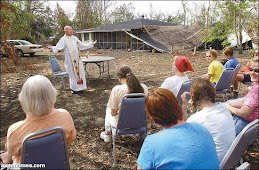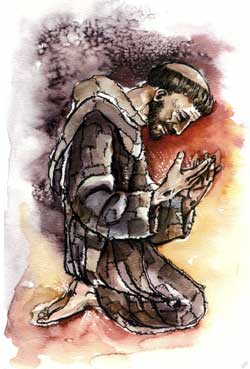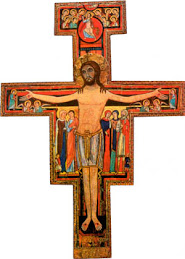Yom Kippur (Heb literally means Day of Atonement) is celebrated on the 10th day of Tishrei, 10 days after Rosh Hashanah. Yom Kippur is first mentioned in Leviticus 23:27 where it is described as a day of atonement when no work should be done. The text goes on to describe the special rites that the priests would do to expiate the sins of the people. One of these rites takes the people's sins and symbolically places them onto an animal which is then driven out into the wilderness. This rite is the origin of the term "scapegoat".
Over time, more and more importance was placed on Yom Kippur as it also became known as the Day of Judgment-the culmination of the 10 days of repentance. To the Rabbis, Yom Kippur marked the climax of the trial of the people; it was when God sealed names in the book of life, or in the book of death. The Rabbis added abstentions that must be followed on Yom Kippur which included eating, drinking, bathing, wearing leather shoes (the most comfortable at the time), and sexual relations. Because Jews go by the lunar calendar, Yom Kippur begins at sunset, and ends one hour after sunset of the following day totaling 25 hours.
Yom Kippur is so important to the Jews that it is sometimes referred to as "the Sabbath of Sabbaths" and is the only fast day that can fall on Saturday (the Jewish Sabbath). The day is spent in Synagogue praying and supplicating to God to be sealed in the book of Life. Yom Kippur is not a sad day; it is a day of reflection and atonement. Fasting is used not as a punishment, but as a cleansing of the body as well as the spirit.
Some Jews stay in the synagogue all day and only take one small break between prayers. Because the day is very important, there are 5 different prayer services instead of the 4 that appear on a regular Sabbath. Yom Kippur ends with a long resonating Shofar blast followed by the breaking of the fast; this marks the end of the 10 day long period of repentance and reflection.
Source: http://www.history.com/content/roshhashanah/yom-kippur
Venerable Gaetano Tantalo
-
Some weeks ago I visited an older parishioner in her home. As were were
chatting, I noticed pictures of two priests displayed in the room.
The priest on ...


















No comments:
Post a Comment